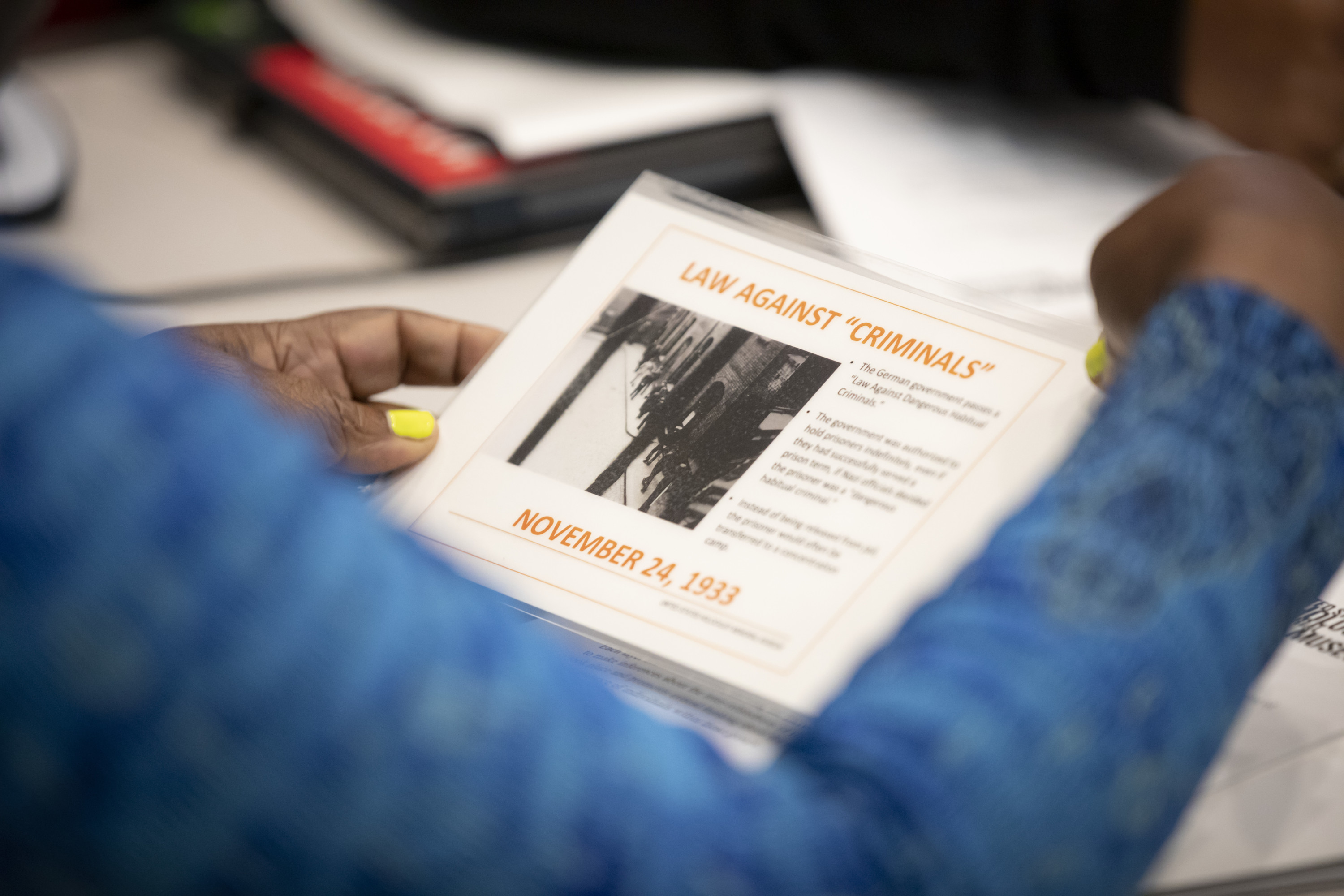US Holocaust Memorial Museum educators and historians created these lesson plans for use in secondary classrooms. Click on a lesson plan to see its recommended grade level, subjects covered, and time required to complete. To explore lessons organized by theme, visit Teaching Materials by Topic.
-
Lesson: Americans and the Holocaust Exhibition Tour and Viewing Guide
In this 39-minute tour, Dr. Daniel Greene, US Holocaust Memorial Museum historian and exhibition curator, walks through the Americans and the Holocaust exhibition and provides an overview of the history, themes, and artifacts presented throughout. The viewing guide includes reflection questions to consider while watching the tour and concluding writing prompts.
-
Lesson: Analyzing Memes
When students bring memes linking current events to history into the classroom, they can be the entry point for a deeper conversation. This activity uses critical thinking skills to unpack the message in the meme, encouraging deeper conversation.
-
Lesson: Behind Every Name, Stories from the Holocaust
By examining true personal stories, told through short animations, students learn about unique individual experiences within the historical context of the Holocaust. This activity contains an extension to examine the role of artifacts in understanding history.
-
Lesson: Black Americans and the Nazi Olympics
Although different in many ways, antisemitism in Nazi Germany during the 1930s and anti-Black racism in Jim Crow-era America deeply affected communities in these countries. While individual experiences and context are unique and it is important to avoid comparisons of suffering, looking at these two places in the same historical period raises critical questions about the impact of antisemitism and racism in the past and present.
-
Lesson: Black Press Newspaper Coverage of the Holocaust (History Unfolded)
By completing this lesson, students will gain a better understanding of the Black Press and the conditions in the United States that shaped opinion and reporting in the Black press related to Americans’ responses to the Holocaust. Students will analyze primary sources and identify concerns Black Americans had in the 1930s and 1940s.
-
Lesson: Connecting the Timeline Activity to The Path to Nazi Genocide
This guide works with all types of Holocaust literature and pairs with any book. A universal guide designed to support the reading of any genre of Holocaust literature, it complements existing English lesson plans for any book or functions as a stand-alone framework. The guide to Holocaust literature places texts in historical context, encouraging students to understand how and why the Holocaust happened.
-
Lesson: Challenges of Escape, 1938–1941
Students will understand the complex factors that led German Jews to seek to emigrate from Nazi Germany and the complex factors that impeded their immigration to the United States in the 1930s and 1940s.
-
Lesson: Critically Analyzing Propaganda
This lesson provides an opportunity for students to dialogue and reflect on the ways in which propaganda affected society during the Holocaust and how it continues to affect people today. They will synthesize and understand how and why Nazi propaganda worked through an opportunity to practice critical analysis of messages.
-
Lesson: Diaries as Historical Sources
Students study examples of diaries written by young people during the Holocaust, particularly examining the ways in which Anne Frank, the most famous diarist of the Holocaust, thought about her audience while writing.
-
Lesson: Exploring Anne Frank’s Diary
Students will examine Anne Frank’s diary as both a historical and a deliberately-created literary text, and will understand how the Holocaust affected the lives of the Frank family.

